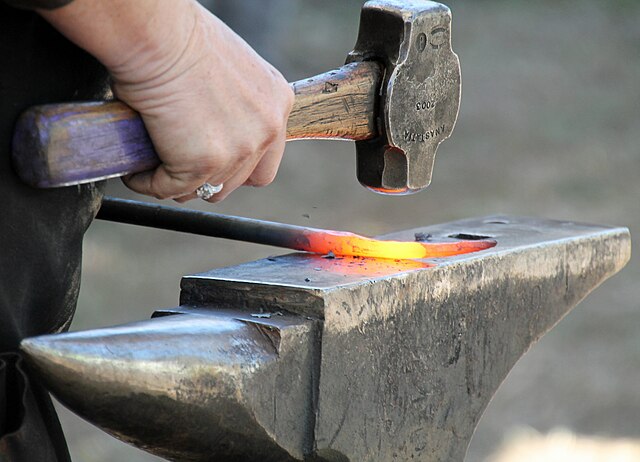Damascus steel is the forged steel of the blades of swords smithed in the Near East from ingots of carbon steel imported from Southern India or made in production centers in Sri Lanka or Khorasan, Iran. These swords are characterized by distinctive patterns of banding and mottling reminiscent of flowing water, sometimes in a "ladder" or "rose" pattern. Such blades were reputed to be tough, resistant to shattering, and capable of being honed to a sharp, resilient edge.
Close-up of a 13th-century Persian-forged Damascus steel sword.
Macroscopic section of crucible steel (left) and false color labeling (right) showing rafts rich in carbide forming elements (CFEs) which lead to clustered cementite spheroids, as well as divorced cementite spheroids.
A bladesmith from Damascus, c. 1900
Pattern on modern "Damascus knife".
Steel is an alloy of iron and carbon with improved strength and fracture resistance compared to other forms of iron. Because of its high tensile strength and low cost, steel is one of the most commonly manufactured materials in the world. Steel is used in buildings, as concrete reinforcing rods, in bridges, infrastructure, tools, ships, trains, cars, bicycles, machines, electrical appliances, furniture, and weapons.
The steel cable of a colliery winding tower
An incandescent steel workpiece in a blacksmith's art
Iron ore pellets used in the production of steel
A Bessemer converter in Sheffield, England








